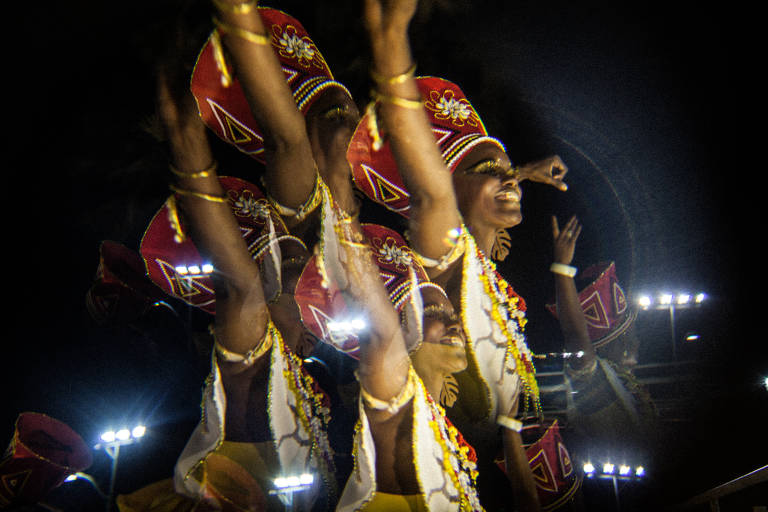Mother Hilda was concerned, and she had reason to be. At the height of Brazil's military regime, Ilê Ayê, the first Afro-Brazilian Carnaval block, was breaking new ground, causing the police to react negatively and the Bahia society to raise their eyebrows and call the group racist for only allowing black people to join.
On the Ash Wednesday of 1975, after Ilê's first parade, Bahia newspaper "A Tarde” published a review titled "Racist Block, Dissonant Sound", calling the parade an "ugly spectacle", with "an enormous lack of imagination."
Criticizing the group's motivations, the review concluded: "Fortunately we don't have any racial issues. This is one of the greatest joys of the Brazilian people."
"Ilê was called racist, but in fact it was created for black people to have fun, because back then they couldn't parade in blocks like the white folks," says Vinícius Murilo, one of the curators of an exhibition about Ilê Ayê that opens in Itaú Cultural Institute, in São Paulo, on Wednesday (3rd).
Mother Hilda's son, Antonio Carlos dos Santos, 66, known as Vovô (Grandpa) - in childhood, a suit too big for his size would grant him the nickname - remembers that the idea of founding the block came from conversations with neighbors in the Curuzu district of Salvador.
"We noticed that in the big blocks, black where only allowed in to carry props," says Vovô, today Ilê's president. Twenty years old at the time, he liked the US Black Power movement and suggested the same name for the block, Poder Negro.
But some people feared, among them his mother, that the name wouldn't be well received. "Many people thought that this new block was some kind of revolt," says Simoni Barbiellini, another curator of the São Paulo exhibit.
Using the yoruba language came as a suggestion from a friend who had a Yoruba-Portuguese dictionary. They agreed on "ilê"(house) and "aiyê"(the earthly world), which together meant "everybody's house". For many years, Ilê's house was in Mother Hilda's candomblé yard (equivalent to a temple), where all the Curuzu community congregated. "Everything happened there, from button football championships, June festivals and holiday parties," says Vovô.
But the matriarch, who was active in Ilê Ayê until right before her death, in 2009, insisted to keep the block's activities separate from her candomble rituals, even if Ilê Ayê shows a reverence for African symbolism.
Translated by NATASHA MADOV
